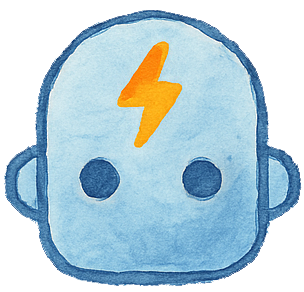Why Teaching Conditional Logic Matters
Teaching conditional logic is one of the most important early steps in helping kids think like programmers. If you’ve ever said, “If you clean your room, then you can have a snack,” you’ve already used conditional logic. It’s how computers make decisions, and it’s something even kindergartners can understand with the right unplugged activities.
Conditional logic helps kids understand the basics of programming, but it also sharpens their everyday reasoning skills. The best part? You don’t need a screen or a keyboard to teach it. Just a little imagination and a few fun games.
Want to start with a super simple activity? Try our If-Then Movement Game for younger learners.
What Is Conditional Logic?
In programming, conditional logic is all about making choices. The most common format is the if/then statement:

- If it’s raining, then bring an umbrella.
- If you press the green button, then the robot spins.
Kids naturally make these kinds of decisions all the time. When we turn them into silly, active games, they start learning how computers think. Teaching conditional logic through playful activities makes it easy for them to grasp.
Try These Unplugged Conditional Logic Activities
1. If/Then Role-Play
Act out silly scenarios. Use index cards with conditionals like:
- If I’m wearing a hat, then I hop on one foot.
- If you see a dog, then bark twice.
Kids take turns drawing cards and acting out the logic. This helps them internalize the cause and effect structure of coding.
2. Yes or No Flashcards
Make flashcards with simple questions and responses:
- Card 1: If it’s a fruit, then say “Yum!”
- Card 2: If it flies, then clap twice.
These can be used during circle time, in the car, or as a quick break between subjects.
3. Decision Tree Drawing
Draw a large decision tree on paper. Start with one question like:
Is it a living thing? Then branch out with more conditionals:
- If yes → Does it have legs?
- If no → Is it made by people?
It’s part science, part logic, and a great visual coding exercise.
4. Simon Says: Code Edition
Play a version of Simon Says with conditionals.
- If Simon says and it ends in “ing,” then follow it.
- If not, freeze like a statue!
Kids love the challenge, and it introduces more complex rule-based logic.
5. Build-a-Rule Cards
Let kids create their own conditionals with a fill-in-the-blank sheet:
- If ________, then ________.
They can test them on siblings or parents and see if they hold up. Bonus points for making it funny.
Why It Works

These activities keep coding rooted in language and movement, not screens. They reinforce cause and effect thinking and give kids confidence in problem-solving. Teaching conditional logic in a screen-free way helps kids stay active and engaged while building foundational skills.
Try It Today
Looking for even more screen-free ways to teach coding? Explore our unplugged activities and check out our beginner-friendly post on Teaching Algorithms to Kids.
For more unplugged computer science ideas, visit the CS Unplugged project, a free site with activities designed by educators and computer scientists.
Your child’s inner coder will thank you.


Leave a Reply